Its quaint island of Puerto Rico – officially the Commonwealth of Puerto Rico – draws travelers with its vibrant culture, scenic landscapes, and historic past. A territory of the United States in the northeast Caribbean Sea, Puerto Rico has Spanish, African, and Taino influences in everything from salsa music to the cuisine. It has beaches with white sand and azure waters, and an interior of tropical rainforests like El Yunque, so the island has natural wonders to please both adventurers and leisure seekers.
More on the reasons why Puerto Rico is considered an exceptional travel destination will highlight some key takeaways, including its historical treasures like the centuries-old fortresses of San Felipe del Morro and San Cristobal in Old San Juan, a UNESCO World Heritage Site. It also preserves its ecological treasures while offering plenty of ecotourism and sustainable travel experiences. What makes Puerto Rico so appealing is explained in the next sections – its cultural festivals, outdoor activities, and local hospitality that make for a Caribbean escapade. Stay tuned as we take you through these insights that may just make you book that next flight to this tropical haven.
Essential Insights
1. Puerto Rico has numerous attractions for everyone. See natural wonders like the El Yunque National Forest – the only tropical rainforest in the U.S. National Forest System – or see the bioluminescent bays at Mosquito Bay in Vieques. Its history is reflected in the centuries-old fortifications of Old San Juan and the local music, festivals, and art are evident.
2. Its cuisine combines indigenous Taino, Spanish, African and American influences. Classics include mofongo – fried plantains – and lechon asado – spit-roasted pork. The local dining experience is matched by Puerto Rico rum – visit distilleries and taste world-famous brands.
3. Puerto Rico is easily accessible from the United States, as no passport is required for U.S. citizens and the currency is the U.S. dollar. Communication is easy because English and Spanish are widely spoken. Its transportation system includes a highway system and public transportation in major metropolitan areas – but renting a car might be the best way to see more remote locations.
4. They offer accommodation in luxury resorts or small guesthouses for both high-end and budget travelers. You can choose from seaside relaxation, city breaks or mountain escapes. The hospitality industry in Puerto Rico strives to make visitors feel at home and staff will often go above and beyond to accommodate guests.
5. The climate in Puerto Rico is tropical and warm year round – an ideal place to escape the colder weather. But visitors should know that hurricane season is from June to November and plan travel accordingly. Still, the island is well-equipped for quick recovery and usually bounces back quickly to receive tourists following such events.
Why Should Puerto Rico Be Your Next Vacation Spot?
Stunning Beaches and Coastal Beauty
Some of Puerto Rico’s best beaches. From the bustling shores of Condado to the secluded and untouched Flamenco beach in Culebra, there’s a beach for everyone. The bioluminescent bays of Vieques Island make kayaking in waters that glow in the dark possible because microorganisms that glow when disturbed glow.
Rainforest Adventures in El Yunque
Nature lovers can enjoy El Yunque National Forest in an almost dreamlike setting. It’s the only tropical rainforest in the US National Forest System and contains rare orchids and wildlife. Walking trails like La Mina and Mount Britton offer views of the surrounding countryside and visitors can dip in natural pools at some of the waterfalls.
Cultural Hotspots in Old San Juan
Cocoa Tree Hill has culture and history. Colorful colonial buildings host many shops, galleries and cafes. Visits to colonial and strategic fortresses like El Morro and San Cristobal are essential. Lively nightspots and celebrated festivals in Old San Juan allow you to sample local music, dance and dishes.
Culinary Delights
The Puerto Rican cuisine has Spanish, African and Taino influences. Local specialties are mofongo – fried plantains – and lechon – slow-roasted pork. Those who want to go more adventurous can pick up traditional alcapurrias and bacalaitos at roadside stands or “kioskos” along Pinones.
Outdoor Sports and Activities
For the active traveler Puerto Rico has plenty of outdoor activities. Rincon has world class surfing and in the central mountainous region you can cave and zip-line. Divers and snorkelers will enjoy the coral reefs off Isla de Mona.
Richness of Art and Museums
Art fans can visit numerous museums and galleries on the island. The Museo de Arte de Puerto Rico and Museo de Arte Contemporaneo de Puerto Rico in San Juan have traditional and modern art pieces. They are all over the island and make great keepsakes of Puerto Rican culture.
Accommodations and Accessibility
Accommodation in Puerto Rico varies from five star resorts to more modest guesthouses and vacation rentals. Easy travel for U.S. citizens (no passport required) and widespread use of the language make it a good place for an island escape.
Year-Round Tropical Climate
The island has a tropical climate year-round and averages 80 degrees Fahrenheit (27 degrees Celsius). This makes traveling to Puerto Rico attractive year round, although planning around the rainy season (May to October) can ward off tropical storms.
What Are the Essential Tips for Traveling to Puerto Rico?
- Research local events – attend festivals and public celebrations.
- Try local cuisine – do not leave without sampling the Island’s signature dishes and drinks.
- Protect natural areas – beaches & rainforests – follow guidelines for the environment.
- Hire a car – public transit may not cover every attraction you want to see.
- Always carry cash-while most places will accept credit cards, smaller vendors and kiosks may accept cash only.
- Pick up some basic Spanish phrases – a little effort is worth it – and the locals will appreciate it.
- Know the weather: the Caribbean can get hurricanes so check the forecast often.
What Attractions Can I Expect to Find in Puerto Rico?
Puerto Rico combines Spanish, African and Taino cultures. It contains historic colonial architecture in Old San Juan and the natural wonders of El Yunque National Forest. You can go surfing, visit bioluminescent bays and visit the island’s music and festivals.
Is Puerto Rico Safe for Tourists?
For tourists, Puerto Rico is generally safe but you have to be careful everywhere. Common sense measures include protecting personal belongings and staying in areas that are frequently visited. Its tourist areas are patrolled but travelers should know safety tips especially when venturing into less touristic areas.
Do I Need a Passport to Travel to Puerto Rico?
A passport is not required to enter Puerto Rico if you are a U.S. citizen – it is a U.S. territory. Like traveling anywhere else in the United States, a state-issued driver’s license or another government ID is required for entry. Non-U.S citizens will need to meet regular entry requirements for the United States.
What Is the Best Time of Year to Visit Puerto Rico?
From mid-April to June, just after the winter and before rainy summer, is the best time to visit Puerto Rico. Weather is good, and since it is off-peak season, there are usually lower prices as well as fewer crowds. It has a tropical climate year-round – even the winter months are warm and inviting.
Can I Use US Dollars in Puerto Rico?
US dollars are the official currency of Puerto Rico. So traveling to the island without having to exchange currency is convenient for American tourists. The island accepts all common forms of payment in the United States.
What Language Is Spoken in Puerto Rico?
The official languages are Spanish and English in Puerto Rico. It’s Spanish, though in schools, it’s a second language, and many Puerto Ricans are bilingual. Most tourist areas and service industries speak English, so communication with English-speaking tourists is fairly straightforward.
Is It Expensive to Travel to Puerto Rico?
The cost of travel to Puerto Rico depends entirely on your travel style, preference and timing. There are luxury resorts and budget vacation rentals available. Restaurants, activities and transportation can also be planned around budgets. Planning ahead and booking early during off-peak seasons can save money.
What Sort of Accommodations Are Available in Puerto Rico?
Puerto Rico has luxury resorts, boutique hotels, vacation rentals and budget inns. Whether it’s the city, the coast or somewhere more remote – there are options for all tastes and budgets.
Are There Any Unique Cultural Experiences in Puerto Rico?
Puerto Rico has culture and history and offers visitors unique experiences. These include traditional music and dance events such as salsa classes, festivals like the San Sebastian Street Festival in Old San Juan, and culinary tours including mofongo and lechon asado. Also on offer is a glimpse of the island’s indigenous Taino people.
Is Puerto Rico Affected by Natural Disasters?
Natural disasters like hurricanes may strike Puerto Rico from June to November during the Atlantic hurricane season. Although the island has improved its resilience and recovery processes, travelers should know this and plan accordingly – perhaps by purchasing travel insurance and knowing the weather forecast while they are there.
Final Thoughts
It is a jewel of the Caribbean that combines natural wonders, historical significance, and cultural experiences. You can spend your time at its golden beaches or hiking through tropical rainforests or just wandering Old San Juan’s cobblestone streets. Accessibility for U.S. travelers, year-round tropical climate, and many activities make your trip to Puerto Rico memorable. This is a destination that has relaxation mixed with adventure, and is suitable for everyone from the laid-back beachgoer to the history buff, the hiker and the cultural buff – Puerto Rico is an excellent place to travel.
As you pick out your next vacation spot, remember that Puerto Rico is more than just its landscapes; it is people too. It resides in its people, its culture, and its streets. Puerto Rico is more than a vacation – it’s an immersion that lets travelers experience a compelling and hospitable culture while enjoying an island paradise. For those seeking beauty and warmth, Puerto Rico is a top choice.






